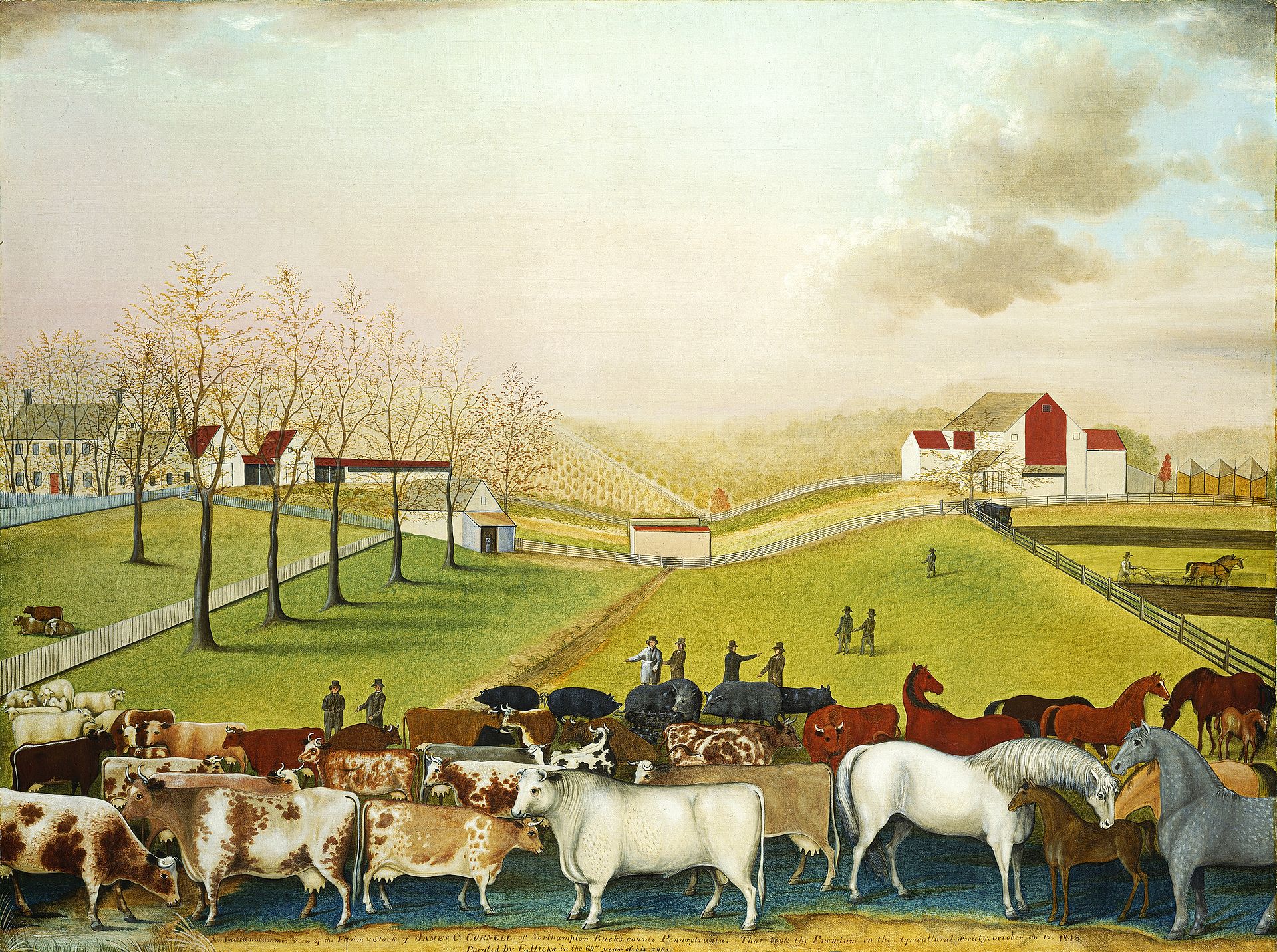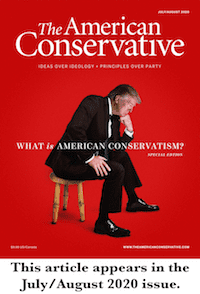Lessons on Citizenship, Place, and a Humane Economy

Land and Liberty: The Best of Free America. Edited by Allan C. Carlson. Preface by Sir Roger Scruton. Afterword by James Matthew Wilson. Wethersfield Institute, 349 pages
This handsome, lavishly produced book rescues from obscurity a critical piece of American intellectual and literary history. Among the many disruptions the Second World War caused was the realignment of American ideological camps. The long American tradition of populism and decentralization was reaching new heights in the 1930s in the face of rapid social and economic dislocation, but it was derailed by the postwar fight against communism. As a result, a strong national government was defended by “conservatives” mobilizing in response to the threat of the Soviet Union, which also helped big business position itself as a defender of freedom. With this collection, we see a different America, where those championing the values of community also opposed rampant capitalism in a way that became foreign to conservatives for decades. In an age suffering from recurrent polio outbreaks, the Great Depression, the emergence of fascism abroad, and centralization (governmental and commercial) at home, Free America asked questions about sufficiency, citizenship, economics, and governance in defining and defending the kind of citizens the country needed.
Free America reflected that critical moment of realignment, as the older, more quixotic America was eclipsed by more ideologically driven camps. It was a quixotic, composite project, intentionally so, of two main groups. On the one hand were the Southern Agrarians, especially the Twelve Southerners who published I’ll Take My Stand in 1930. This group, loosely affiliated with Vanderbilt University, included Allen Tate, Donald Davidson, Andrew Nelson Lytle, and John Crowe Ransom. The Statement of Principles to that book states that the “communities and private persons sharing the agrarian tastes are to be found widely within the Union. Proper living is a matter of the intelligence and the will, does not depend on the local climate or geography, and is capable of a definition which is general and not Southern at all.”
Tate thought that the book’s title was needlessly adversarial and would invite dismissal from critics; his proposed title, Tracts Against Communism, perhaps better conveyed the focus of at least some of its contributors. Tate proved prescient. As it happened, the Agrarian critique of urbanism, industrialism, and centralization was overshadowed by a perception that it was simply a defense of the South, including its racial hierarchies—a criticism that is not without some support. Six years later, some of the Twelve Southerners would join with future Free America contributors and others to publish Who Owns America? The title indicated a more direct attack on the concentrations of wealth and power.
On the other hand were the distributists, a more loosely-organized group of economists, writers, publicists, and dreamers located mostly in the North, who traced their lineage to other sources. Most of these sources were English, such as G.K. Chesterton and Hilaire Belloc, but they also included native influence such as the tax theories of Henry George and the Catholic rural life movement. But they too were overwhelmed by the war, and much of the infrastructure and momentum of the distributist and agrarian revival of the 1930s was gone by, say, 1948.
Free America lasted until 1946, and original copies are exceedingly difficult to find. The journal was the brainchild of three people: Herbert Agar, Ralph Borsodi, and Chauncey Stillman. Agar is perhaps the best known of the three. Although born in New Rochelle, New York, Agar spent time in London where he worked for G.K.’s Weekly, among other journals, and absorbed distributist arguments about the dangers of concentrated power and property whether denominated “socialist” or “capitalist.” In 1933, he won the Pulitzer Prize for his history of the presidency, which draws on distributist arguments to make the case that the country was founded by “small farmers, artisans, and merchants, with productive property owned by the vast majority of families.”
Borsodi was a more straightforward anarchist, and advocated intendent, fully productive homesteads. Stillman perhaps balanced the two. He was no stranger to concentrations of wealth—he came from a wealthy Texas family whose ancestor was a founder of what became Citigroup—but he turned his attention rather to the country life than finance. He agreed to finance Free America but made additional substantive editorial contributions of his own, especially in the area of sustainable and innovative farming, which were methods he practiced at his estate in the small New York town of Amenia. His essay, “Challenge to Famine,” argues for biodynamic farming as a solution to soil exhausted by factory farming methods.
In his excellent introduction to Land and Liberty, Allan Carlson puts these disparate movements into context. Despite policy and practical disagreements, the editors “would test every existing or proposed economic, political and social matter by a common measure: how the things at issue would affect the small and the human.” In the inaugural issue, Agar makes the point that the contributors were united in their opposition to collectivism and plutocracy, and the journal would serve as “the meeting ground for those who are equally opposed to finance-capitalism, communism, and fascism,” which were incompatible with democracy, since democracy could only survive when anchored by the widespread possession of property. The journal gathered contributors across from what we now would consider the ideological spectrum. Belloc contributed an essay, on “The Enemy,” as did the editor of Commonweal, Michael Williams, on “The Great Tradition.”
The journal combined theoretical analyses, like Borsodi’s two-part essay on decentralization, with more practical concerns. (Carlson includes samples in sections titled “Recovering Homecraft,” “The Productive Home,” and “Practical Homesteading.”) The underlying theme of both kinds of articles was, as Wilson says in his afterword, “the belief that cultural form, the way of life of a people, is partly dependent on the material ‘base’ or economic structure.” This is no Marxist notion, but reflects a simple truth. If a society valorizes (and materially rewards) the high-flying management consultant who leaves her home to live in temporary dwellings across the country (or world) through much of her early adult life, then that creates a certain type of culture. A society that counsels instead that the children of management consultants should go out into the country to start a farm and reject the global capitalist machine would create another, even if not every institution in the country were run on distributist bases. Similarly with property: a society that believes intangible financial “assets” create and sustain wealth in the same way as actual goods and skills will reflect that belief in its societal arrangements.
Now, one should not idolize farming. It can be hard, grueling work. The distributist idea fails if it is to force everyone to be a small-scale farmer. Rather, the idea is to recognize that the material conditions that create massive agricultural concerns may not be as economical as advertised, and also that the culture such concentrations create is incompatible with a free society. In this connection it may be worth noting the antipathy most Free America writers had towards war, and for the same reason: it favors bigness, which in turn transforms free citizens into “consumers” and derails improvements in technology or machinery that could have been for the benefit of all.
The mistake critics of distributism or agrarianism often make is in thinking that writers like those in Free America required a country to be all distributist, or agricultural, or not at all. Instead, it is the mass culture that requires uniformity and projects onto distributism a totalizing attitude distributism largely lacks. I see no necessary problem in a distributist society with large cities or large-scale industry, and indeed debate over how to combine distributist principles with America as it then existed peppers the pages of Free America. The options are varied, as H.A. Highstone noted in a 1943 essay. The challenge is in forming institutions such that they serve the citizens, rather than vice versa.
In one sense, the world conveyed in this book is now almost impossible to imagine. It is an America where many people were still familiar with the rhythms of rural life and the scrim of machinery and technology had not obscured the natural realities of community. The yeoman farmer as the national role model yielding to the soldier, the factory worker, the ad man, the “knowledge worker,” and the town or small city to the “metropolis.” In 2020, for example, it is difficult to see how we might turn away from mass agriculture, but it is not difficult to imagine an economic system that favors families and communities over financial institutions and global corporations. 
And even mass agriculture need not be accepted as is. In “Fallacy of Mass Production,” Borsodi sounds at first unrealistic in railing against the evils of factory flour production in 1937, but his point makes more sense now, perhaps. It is not simply the means of production (mass versus artisanal). Rather, one should look at “the part which favoritism in freight rates, taxation and other forms of government assistance to manufacturers played in enabling the ‘giant’ mills to undersell their smaller competitors,” allowing these favored enterprises to engage in predatory pricing and misleading advertising with the public.
In considering the future of distributism, Peter van Dresser expressed a “degree of discouragement” given the explosive growth of the state and corporate power but hoped that distributive principles could be “an ‘enclave’ within our present managerial civilization” and “broaden its associations and alliances.” Still good advice, 70 years on.
Gerald J. Russello is editor of The University Bookman.
Comments